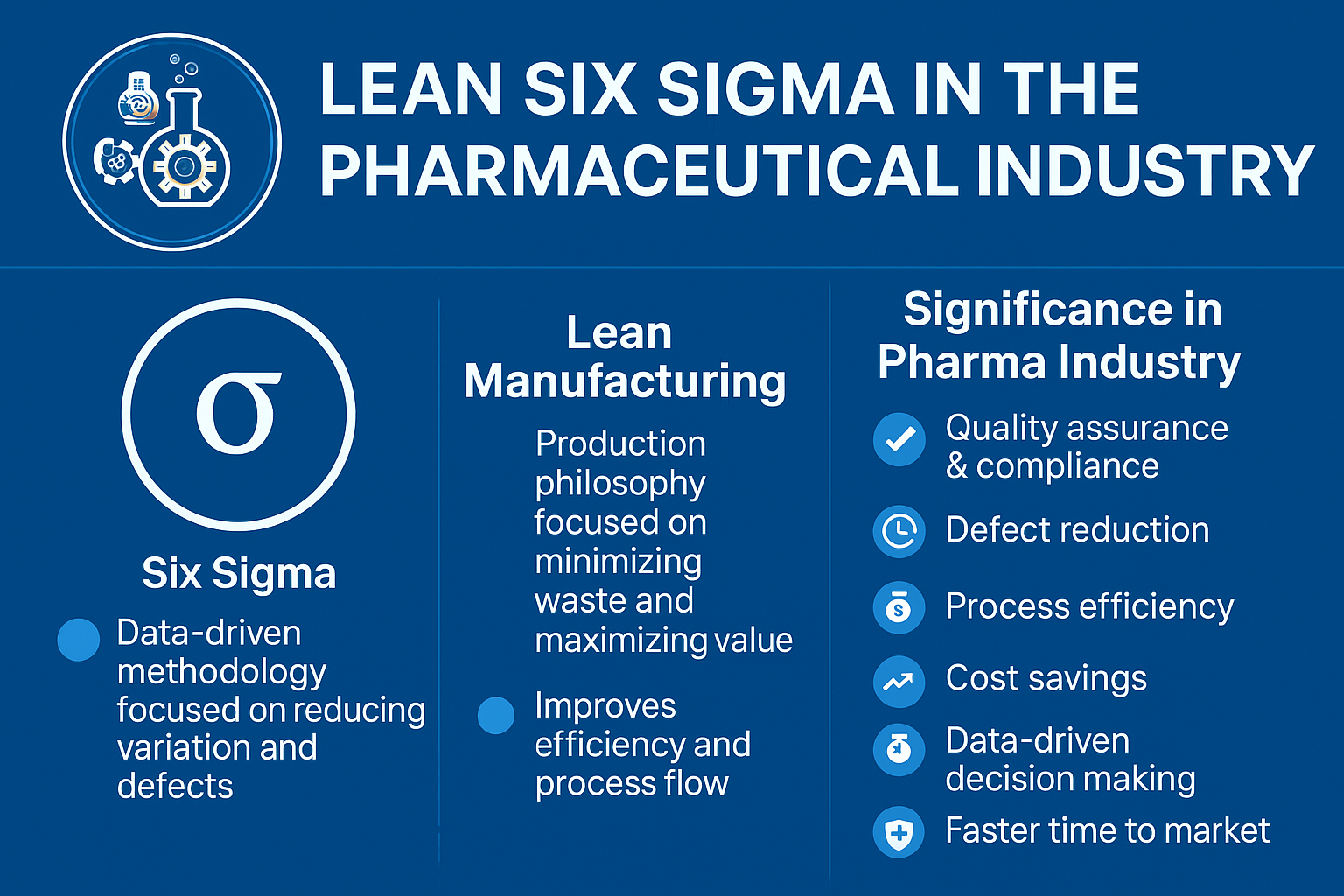
Six Sigma
Six Sigma is a data-driven methodology and set of tools used to improve business processes by reducing variability, defects, and waste. It aims to enhance quality and performance, ultimately increasing customer satisfaction and profitability.
Key Concepts of Six Sigma:
- Goal: Achieve near perfection—no more than 3.4 defects per million opportunities (DPMO).
- Focus: Continuous improvement of processes by identifying and removing causes of defects or errors.
- Methodologies:
- DMAIC (Define, Measure, Analyze, Improve, Control) – for improving existing processes.
- DMADV (Define, Measure, Analyze, Design, Verify) – for designing new processes or products.
- Roles: Similar to martial arts, Six Sigma uses a belt system:
- White Belt: Basic awareness.
- Yellow Belt: Team member understanding the fundamentals.
- Green Belt: Leads smaller projects, data analysis.
- Black Belt: Leads large projects, deep analysis and leadership.
- Master Black Belt: Strategic level, mentoring and training.
Origins:
- Developed by Motorola in the 1980s.
- Popularized by General Electric (GE) under Jack Welch in the 1990s.
Tools Used:
- Statistical analysis (e.g., control charts, regression)
- Process mapping (e.g., SIPOC)
- Root cause analysis (e.g., Fishbone diagram, 5 Whys)
- Failure Modes and Effects Analysis (FMEA)
Lean Manufacturing
Lean Manufacturing is a production philosophy and set of practices aimed at minimizing waste while maximizing productivity and value to the customer. It focuses on doing more with less—less time, inventory, space, labor, and money—while improving quality and responsiveness.
Core Principles of Lean (based on the Toyota Production System):
- Value: Define what truly adds value from the customer’s perspective.
- Value Stream: Map all steps in the process and identify non-value-added steps (waste).
- Flow: Ensure smooth, uninterrupted flow of products or services through the value stream.
- Pull: Produce only what is needed, when it’s needed—based on customer demand (pull system).
- Perfection: Continuously improve processes to strive for perfection (Kaizen).
The 8 Types of Waste (TIMWOODS):
- Transportation – Unnecessary movement of products/materials.
- Inventory – Excess products or materials not being used.
- Motion – Excess movement by people (e.g., reaching, walking).
- Waiting – Idle time due to delays.
- Overproduction – Producing more than needed.
- Overprocessing – Doing more work than necessary.
- Defects – Errors that require rework or cause scrap.
- Skills – Underutilizing people’s talents and ideas.
Common Lean Tools:
- 5S: Sort, Set in order, Shine, Standardize, Sustain.
- Kaizen: Continuous improvement.
- Kanban: Visual signal for controlling workflow.
- Poka-yoke: Error-proofing techniques.
- Value Stream Mapping: Visualizing process steps and waste.
Origin:
- Developed by Toyota post-World War II.
- Based on ideas from Henry Ford, Frederick Taylor, and W. Edwards Deming.
Lean Manufacturing Vs Six Sigma
In short, Lean focuses on process efficiency and eliminating waste, while Six Sigma focuses on reducing process variation and defects. Many companies now integrate both under Lean Six Sigma.
Here’s a comparison chart between Lean and Six Sigma to help you clearly see how they differ and complement each other:
| Aspect | Lean | Six Sigma |
|---|---|---|
| Primary Focus | Eliminating waste (non-value-added activities) | Reducing variation and defects |
| Goal | Improve process flow and efficiency | Achieve consistent, high-quality output |
| Approach | Visual and intuitive (based on flow and waste) | Data-driven and statistical |
| Methodology | 5 Principles (Value, Flow, Pull, etc.) | DMAIC / DMADV |
| Tools | 5S, Kaizen, Kanban, Value Stream Mapping, Poka-yoke | Control Charts, Pareto Charts, Regression, FMEA |
| Origin | Toyota Production System (TPS), Japan | Motorola, USA |
| Culture Emphasis | Continuous improvement (Kaizen) and employee input | Problem-solving expertise and project structure |
| Implementation Time | Faster, often incremental changes | Longer, more rigorous analysis |
| Use Case | Improve speed, reduce waste, streamline processes | Improve accuracy, reduce errors and variability |
| Key Metric | Process cycle time, lead time | Defects per million opportunities (DPMO), Sigma level |
| Training Levels | No formal belt system (but uses Lean experts) | Belt system: Green, Black, Master Black Belts |
Summary:
- Lean = speed, efficiency, and flow.
- Six Sigma = precision, accuracy, and control.
- Lean Six Sigma = combines both to improve process speed and quality simultaneously.
Lean Six Sigma in Pharma
Lean Six Sigma is highly significant in the pharmaceutical industry because it helps companies improve quality, reduce waste, and stay compliant with strict regulatory standards—all while speeding up production and reducing costs.
Why Lean Six Sigma Matters in Pharma:
- Quality Assurance & Compliance
- Pharma is highly regulated (FDA, EMA, etc.), and Lean Six Sigma improves process consistency, reducing errors and deviations.
- Ensures adherence to Good Manufacturing Practices (GMP) and standard operating procedures (SOPs).
- Defect Reduction
- Minimizes batch failures, contamination risks, and deviations that can cost millions.
- Improves the Right First Time (RFT) rate in manufacturing and quality control.
- Process Efficiency
- Streamlines manufacturing and lab operations by eliminating non-value-added steps (waste).
- Improves throughput and reduces cycle time in drug production, packaging, and testing.
- Cost Savings
- Reduces rework, scrap, inventory holding, and overhead.
- Improves equipment utilization (via tools like OEE—Overall Equipment Effectiveness).
- Data-Driven Decision Making
- Uses real-time data and statistical tools to identify root causes of problems and implement effective, lasting solutions.
- Faster Time to Market
- Speeds up product development, validation, and regulatory approval processes through more efficient and controlled workflows.
- Improved Patient Safety
- Enhances drug efficacy and consistency, reducing risk of recalls or adverse events.
- Cross-Functional Collaboration
- Encourages departments like R&D, manufacturing, quality, and supply chain to work together toward common goals using shared methodologies.
Common Applications in Pharma:
- Reducing lab turnaround time (Lean in QC labs)
- Minimizing deviations and CAPAs
- Improving yield in production
- Optimizing cleaning validation processes
- Reducing lead time in clinical trial material production
